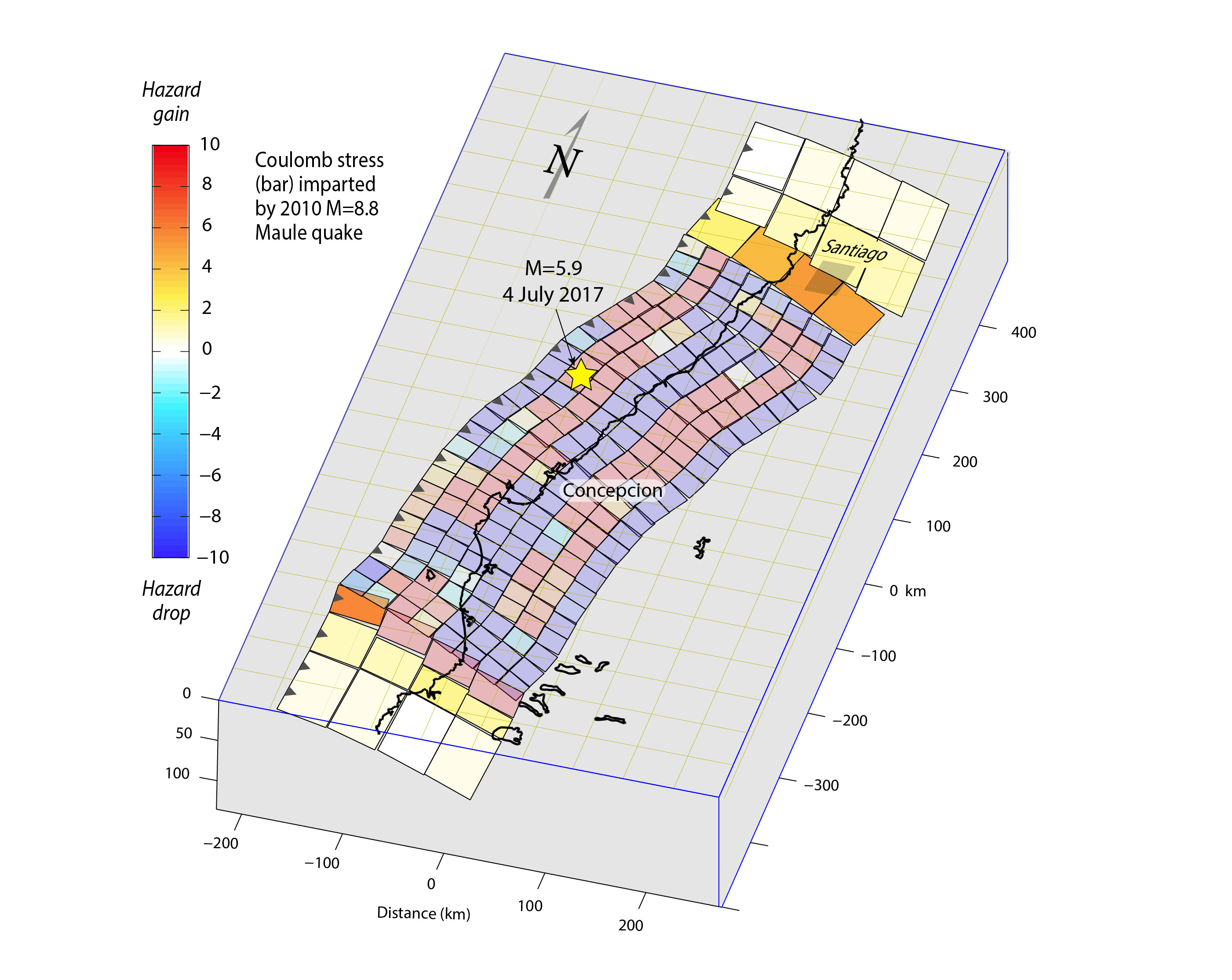By David Jacobson, Temblor

Yesterday afternoon, at 12:05 p.m. local time, a M=5.9 earthquake struck offshore of Chile, on the fringe of the rupture zone of the 2010 M=8.8 Maule earthquake. The Maule quake in 2010 occurred on the subduction zone, where the Nazca plate subducts beneath the South American continent. While that quake was a known thrust event, yesterday’s event does not have a focal mechanism. Having said that, given its location and shallow depth (10 km) it too likely occurred on the subducting slab and would therefore have been a thrust event.

Despite this earthquake’s moderate magnitude, it was not widely felt. While the USGS shows strong shaking near the epicenter, the quake was nearly 70 km offshore, meaning seismic energy dissipated significantly before it reached any city. For example, in Constitucion, only 90 km from the epicenter, only light shaking was felt. It is because of this that there have been no reports of damage or injuries.
The country of Chile lies along one of the most seismically active regions on earth. Just offshore is the Peru-Chile trench, which extends from southern Chile, to southern Panama, a distance of over 7,000 km. As the Nazca plate subducts beneath South America at a rate of approximately 74 mm/yr in the location of yesterday’s event, significant stress is built up. Because of this, Chile is no stranger to large magnitude earthquakes. As was brought up earlier, the M=5.9 quake yesterday occurred near the rupture zone of the 2010 M=8.8 Maule earthquake, which killed 525 people and resulted in billions of dollars worth of damage. In the figure below, which shows Coulomb stress change following the Maule quake, one can see that yesterday’s earthquake occurred in a region that saw a stress increase. Therefore, it is possible that it was a late aftershock of the Maule event.

Because of the significant stress built up along the subduction zone, yesterday’s M=5.9 earthquake should not be considered surprising. Based on the Global Earthquake Activity Rate (GEAR) model, which is available in Temblor, a M=7.25 earthquake is possible in this region. This model uses global strain rates and seismicity since 1977 to determine what the likely earthquake in your lifetime is anywhere on earth.

References
USGS
European-Mediterranean Seismological Centre (EMSC)
- Earthquake science illuminates landslide behavior - June 13, 2025
- Destruction and Transformation: Lessons learned from the 2015 Gorkha, Nepal, earthquake - April 25, 2025
- Knock, knock, knocking on your door – the Julian earthquake in southern California issues reminder to be prepared - April 24, 2025
